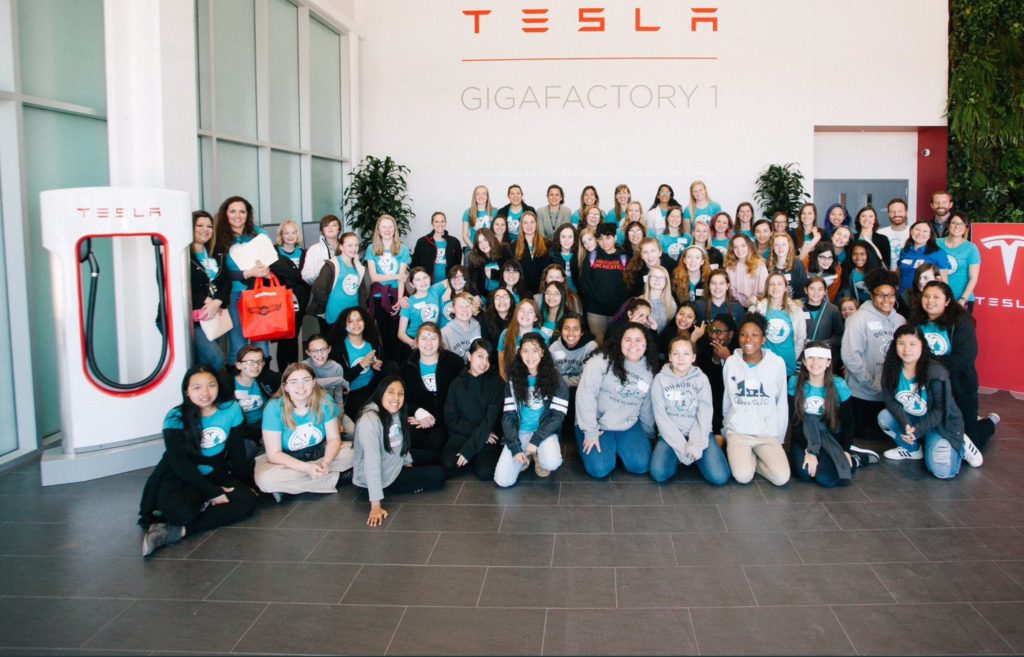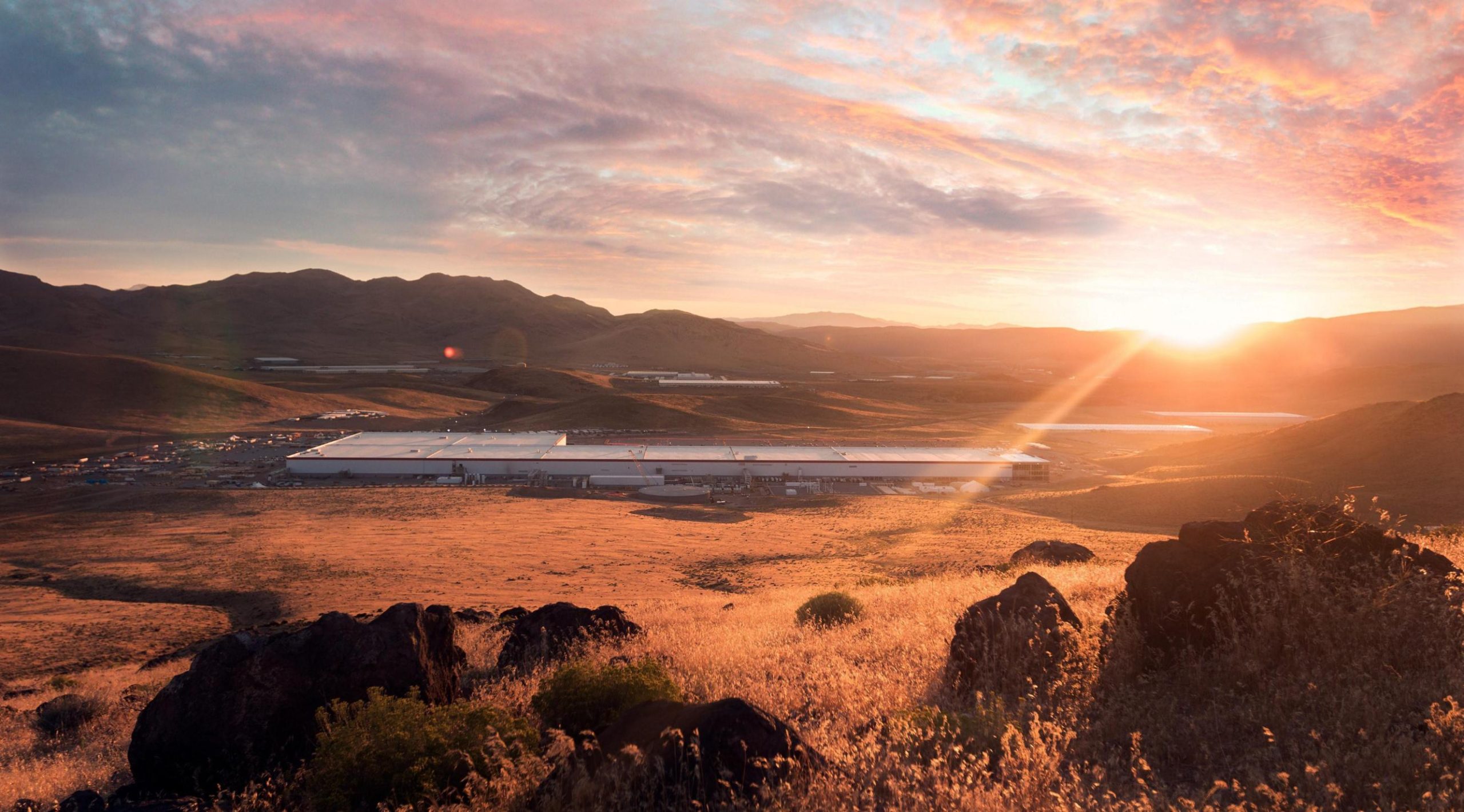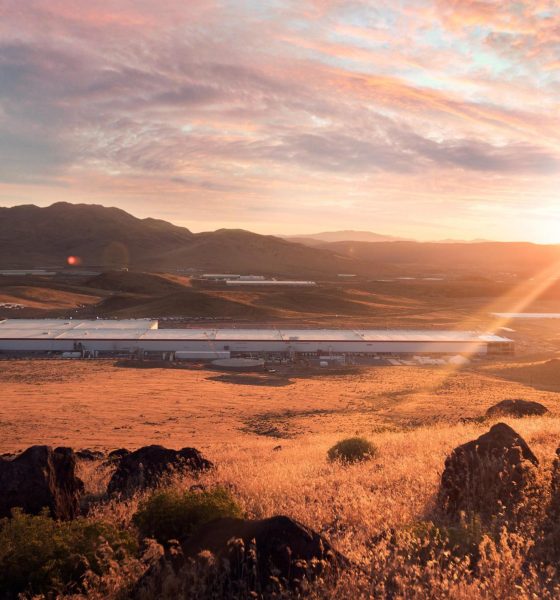In an announcement at a meeting with the Nevada Board of Education last Thursday, Tesla officials stated that it would be issuing an initial grant of $1.5 million to the state’s K-12 education system. The donation is the first part of a $37.5 million grant that Tesla is set to roll out for the next few years, as a means for the company to help develop STEM talent within the state.
According to Nevada Gov. Brian Sandoval, Tesla’s grant, which would be released on a quarterly basis, will give students more access to specialized fields of study such as Science, Technology, Engineering, and Math (STEM). In a statement to the Nevada Appeal, Tesla CTO JB Straubel stated that the electric car maker and energy company expects STEM jobs in the state to increase over the coming years.
“The demand for STEM jobs in Nevada will continue to grow dramatically over the next few years,” Straubel said.
Tesla selected the recipients of the initial $1.5 million grant together with teachers, business leaders, and Nevada government officials. The first round of recipients includes $315,550 to FIRST Nevada and $127,100 to Robotics Education and Competition Foundation, which would allow schools to establish premier robotics programs. $263,924 will also be given to the DRI at UNR as well, to develop teacher training programs on robotics and STEM.
The Envirolution, Inc. is set to receive $262,700, which would enable the institution to develop a STEM program that focuses on energy sustainability, as well as projects that push energy efficiency to local Nevada schools and businesses. $200,000 will also be granted to Jobs for Nevada Graduates for the development of mentoring and employability skills. Sierra Nevada Journeys is set to receive $154,083 to implement programs that would foster interest in STEM fields at an early age. The grant will also be used to provide 250 scholarships for students in underserved communities, where qualifying individuals could attend overnight learning programs.
Lastly, $76,643 will be granted to Energetics Education for a pilot Solar Rollers program in Washoe County, which would challenge high school students to design, build, and race solar-powered radio-controlled vehicles. An additional $50,000 each at Washoe and Clark school districts will further be distributed to expand special assignment roles in Career and Technical Education offices.
Tesla’s grant to Nevada’s education system was outlined in the company’s documents from October 2014. As noted by auto journalist Bozi Tatarevic on Twitter, Tesla’s donations for the state’s education system is part of Gigafactory 1’s incentive package. In the filings submitted by Tesla then, the electric car and energy company pledged to make direct contributions to the state’s K-12 programs, together with a $1 million grant to fund advanced battery research at the UNL, as well as a pledge to support the state’s the veterans.
“Tesla will make direct contributions to K-12 education of $37.5 million beginning August 2018; grant $1 million to fund advanced battery research at UNLV; prioritize the employment of Nevadans and Veterans.”

Tesla takes part in this year’s Introduce a Girl to Engineering Day. [Credit: Tesla]
As noted in Tesla’s Gigafactory incentive deal, the battery facility is expected to increase regional employment by 10%, with a total economic impact of around $100 billion. This economic impact is expected to increase Nevada’s regional GDP by 20%. The Gigafactory is also estimated to generate around $1.9 billion in total financial impacts.
Tesla’s Gigafactory in Nevada is tasked with the production of the battery packs and drivetrains for the Model 3, the company’s first attempt at a mass-market electric car. Over the past year, Gigafactory 1 has largely grown from within as Tesla continued the production ramp of the electric sedan. This past Q2 2018, reports emerged that robots and additional machinery from Tesla Grohmann Automation in Germany were transported by air from Europe. The robots were reportedly installed at the Gigafactory to enable Tesla to address production bottlenecks in the Model 3’s battery module line.
Despite its already massive size, Gigafactory 1 is less than 30% complete. Fully built, Gigafactory 1 will be the world’s largest building by physical footprint, covering 13 million square feet.

News
Tesla China delivery centers look packed as 2025 comes to a close
Needless to say, it appears that Tesla China seems intent on ending 2025 on a strong note.

Tesla’s delivery centers in China seem to be absolutely packed as the final days of 2025 wind down, with photos on social media showing delivery locations being filled wall-to-wall with vehicles waiting for their new owners.
Needless to say, it appears that Tesla China seems intent on ending 2025 on a strong note.
Full delivery center hints at year-end demand surge
A recent image from a Chinese delivery center posted by industry watcher @Tslachan on X revealed rows upon rows of freshly prepared Model Y and Model 3 units, some of which were adorned with red bows and teddy bears. Some customers also seem to be looking over their vehicles with Tesla delivery staff.
The images hint at a strong year-end push to clear inventory and deliver as many vehicles as possible. Interestingly enough, several Model Y L vehicles could be seen in the photos, hinting at the demand for the extended wheelbase-six seat variant of the best-selling all-electric crossover.
Strong demand in China
Consumer demand for the Model Y and Model 3 in China seems to be quite notable. This could be inferred from the estimated delivery dates for the Model 3 and Model Y, which have been extended to February 2026 for several variants. Apart from this, the Model Y and Model 3 also continue to rank well in China’s premium EV segment.
From January to November alone, the Model Y took China’s number one spot in the RMB 200,000-RMB 300,000 segment for electric vehicles, selling 359,463 units. The Model 3 sedan took third place, selling 172,392. This is quite impressive considering that both the Model Y and Model 3 are still priced at a premium compared to some of their rivals, such as the Xiaomi SU7 and YU7.
With delivery centers in December being quite busy, it does seem like Tesla China will end the year on a strong note once more.
News
Tesla Giga Berlin draws “red line” over IG Metall union’s 35-hour week demands
Factory manager André Thierig has drawn a “red line” against reducing Giga Berlin’s workweek to 35 hours, while highlighting that Tesla has actually increased its workers’ salaries more substantially than other carmakers in the country.

Tesla Giga Berlin has found itself in a new labor dispute in Germany, where union IG Metall is pushing for adoption of a collective agreement to boost wages and implement changes, such as a 35-hour workweek.
In a comment, Giga Berlin manager André Thierig drew a “red line” against reducing Giga Berlin’s workweek to 35 hours, while highlighting that Tesla has actually increased its workers’ salaries more substantially than other carmakers in the country.
Tesla factory manager’s “red line”
Tesla Germany is expected to hold a works council election in 2026, which André Thierig considers very important. As per the Giga Berlin plant manager, Giga Berlin’s plant expansion plans might be put on hold if the election favors the union. He also spoke against some of the changes that IG Metall is seeking to implement in the factory, like a 35-hour week, as noted in an rbb24 report.
“The discussion about a 35-hour week is a red line for me. We will not cross it,” Theirig said.
“(The election) will determine whether we can continue our successful path in the future in an independent, flexible, and unbureaucratic manner. Personally, I cannot imagine that the decision-makers in the USA will continue to push ahead with the factory expansion if the election results favor IG Metall.”
Giga Berlin’s wage increase
IG Metall district manager Jan Otto told the German news agency DPA that without a collective agreement, Tesla’s wages remain significantly below levels at other German car factories. He noted the company excuses this by referencing its lowest pay grade, but added: “The two lowest pay grades are not even used in car factories.”
In response, Tesla noted that it has raised the wages of Gigafactory Berlin’s workers more than their German competitors. Thierig noted that with a collective agreement, Giga Berlin’s workers would have seen a 2% wage increase this year. But thanks to Tesla not being unionized, Gigafactory Berlin workers were able to receive a 4% increase, as noted in a CarUp report.
“There was a wage increase of 2% this year in the current collective agreement. Because we are in a different economic situation than the industry as a whole, we were able to double the wages – by 4%. Since production started, this corresponds to a wage increase of more than 25% in less than four years,” Thierig stated.
News
Tesla is seeing a lot of momentum from young Koreans in their 20s-30s: report
From January to November, young buyers purchased over 21,000 Teslas, putting it far ahead of fellow imported rivals like BMW and Mercedes-Benz.

Tesla has captured the hearts of South Korea’s 20s-30s demographic, emerging as the group’s top-selling imported car brand in 2025. From January to November, young buyers purchased over 21,000 Teslas, putting it far ahead of fellow imported rivals like BMW and Mercedes-Benz.
Industry experts cited by The Economist attributed this “Tesla frenzy” to fandom culture, where buyers prioritize the brand over traditional car attributes, similar to snapping up the latest iPhone.
Model Y dominates among young buyers
Data from the Korea Imported Automobile Association showed that Tesla sold 21,757 vehicles to the 20s-30s demographic through November, compared to BMW’s 13,666 and Mercedes-Benz’s 6,983. The Model Y led the list overwhelmingly, with variants like the standard and Long Range models topping purchases for both young men and women.
Young men bought around 16,000 Teslas, mostly Model Y (over 15,000 units), followed by Model 3. Young women followed a similar pattern, favoring Model Y (3,888 units) and Model 3 (1,083 units). The Cybertruck saw minimal sales in this group.
The Model Y’s appeal lies in its family-friendly SUV design, 400-500 km range, quick acceleration, and spacious cargo, which is ideal for commuting and leisure. The Model 3, on the other hand, serves as an accessible entry point with lower pricing, which is valuable considering the country’s EV subsidies.
The Tesla boom
Experts described Tesla’s popularity as “fandom culture,” where young buyers embrace the brand despite criticisms from skeptics. Professor Lee Ho-geun called Tesla a “typical early adopter brand,” comparing purchases to iPhones.
Professor Kim Pil-soo noted that young people view Tesla more as a gadget than a car, and they are likely drawn by marketing, subsidies, and perceived value. They also tend to overlook news of numerous recalls, which are mostly over-the-air software updates, and controversies tied to the company.
Tesla’s position as Korea’s top import for 2025 seems secured. As noted by the publication, Tesla’s December sales figures have not been reported yet, but market analysts have suggested that Tesla has all but secured the top spot among the country’s imported cars this year.










